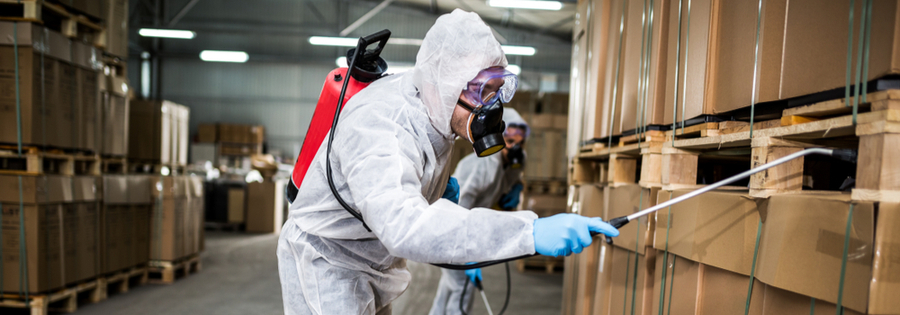Efficient Bed Bug Treatment: Get Rid Of Infestations Safely!
Efficient Bed Bug Treatment: Get Rid Of Infestations Safely!
Blog Article
Specialist Parasite Control Techniques for Long-Term Outcomes
Expert pest control strategies encapsulate a thorough technique that starts with a detailed examination and evaluation, followed by exact pest recognition to understand their habits patterns. The implementation of Integrated Bug Management (IPM) concepts, combined with eco-conscious treatments, develops the keystone of sustainable bug eradication.
Assessment and Analysis
Upon entering a building for pest control solutions, the preliminary step is a thorough examination and analysis to recognize the level of the invasion and figure out the most efficient treatment strategy. Professional bug control technicians are educated to meticulously analyze the premises, looking for signs of bug task such as droppings, gnaw marks, nests, or any architectural damages. They will certainly also analyze the problems that may be drawing in bugs, such as food resources, water leakages, or entrance factors.

Bug Identification and Behavior

Moreover, understanding the behavior of the determined bug is vital to implementing effective control procedures. Understanding where bugs nest, what they feed on, and their task patterns can assist pest control specialists design techniques to eliminate them effectively. Some bugs might be nighttime, while others are a lot more energetic throughout the day. This understanding enables the application of treatments at ideal times for optimum performance.
Integrated Insect Management (IPM)
Integrated Pest Monitoring (IPM) methods integrate several methods to control and protect against pest problems in a lasting and ecologically friendly fashion. exterminator. By incorporating techniques such as organic control, environment manipulation, alteration of cultural practices, and using resistant selections, IPM intends to minimize making use of chemical pesticides
Among the crucial principles of IPM is the focus on avoidance. This proactive method exterminator near me entails tracking parasite populations regularly to identify any possible problems before they rise. By identifying parasite problems beforehand, pest control steps can be applied quickly and properly.
Additionally, IPM advertises using safe pest control approaches whenever possible. This can consist of using natural killers of the pests, introducing beneficial pests, or using pheromones to interfere with breeding patterns. By decreasing dependence on chemical pesticides, IPM not only shields the environment however additionally helps preserve an equilibrium in the ecosystem.
Environmentally-Friendly Treatments
Applying eco-conscious strategies in insect control treatments can properly address infestations while prioritizing ecological sustainability. Environmentally-friendly therapies concentrate on minimizing the influence of pest control approaches on ecosystems, non-target microorganisms, and human health and wellness. These methods typically include the usage of all-natural killers, such as ladybugs or nematodes, to control pest populations, reducing the need for chemical interventions. Additionally, techniques like habitat control, such as changing moisture levels or removing food sources, can aid deter pests without using hazardous substances.
One more key facet of environmentally-friendly therapies is making use of organic and biodegradable items that damage down rapidly without leaving hazardous residues in the setting. Organic insecticides derived from plants like chrysanthemums or neem offer reliable bug control while positioning minimal threat to non-target types. Utilizing approaches like warmth treatments or scent traps can target specific bugs with precision, minimizing the overall ecological impact of bug control practices.
Ongoing Surveillance and Maintenance
Consistent security and upkeep are essential elements of effective bug control management. Continuous surveillance plays a critical function in ensuring that insect problems are spotted very early and dealt with immediately. Normal evaluations by experienced experts are essential to identify any indications of pest activity, analyze the effectiveness of previous therapies, and make adjustments to the bug control strategy as needed. By monitoring bug populaces with time, bug control specialists can track trends, anticipate prospective concerns, and apply safety nets to lessen the threat of future infestations.
Along with monitoring, upkeep methods are important for long-term pest control success. This consists of applying appropriate cleanliness measures to get rid of possible food and water sources for bugs, sealing off entrance indicate stop pests from getting in the facilities, and attending to any architectural concerns that might promote insect problems (bed bug dog). By integrating recurring monitoring and maintenance right into an integrated parasite management approach, businesses can make sure a pest-free setting and safeguard their property against expensive damages and health dangers
Final Thought
In conclusion, using professional parasite control techniques such as detailed inspection and evaluation, precise bug identification and understanding of their habits, integrated bug monitoring approaches, environmentally-friendly therapies, and ongoing tracking and maintenance are necessary for attaining lasting outcomes in parasite control. By implementing these methods, individuals can effectively manage insect invasions and keep a pest-free setting in a lasting way.
Report this page